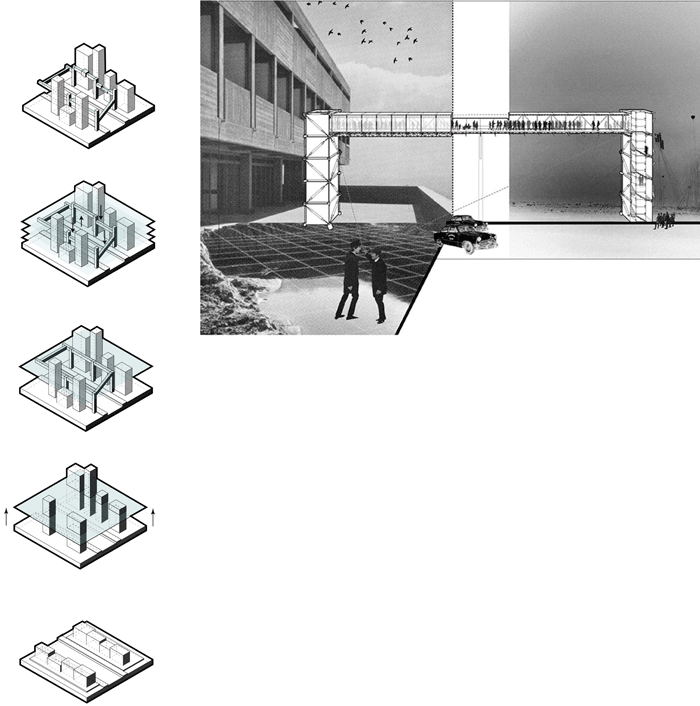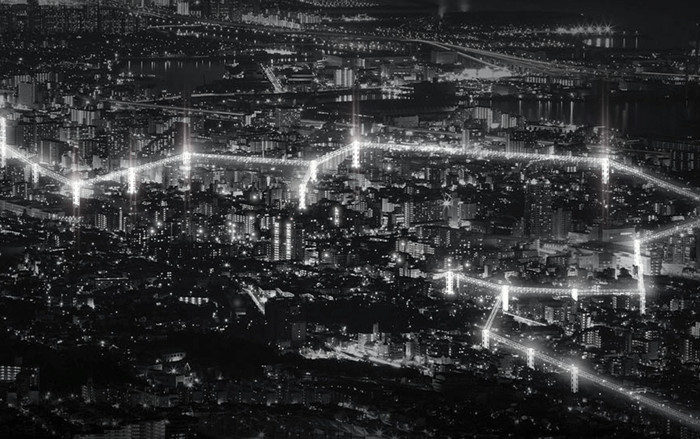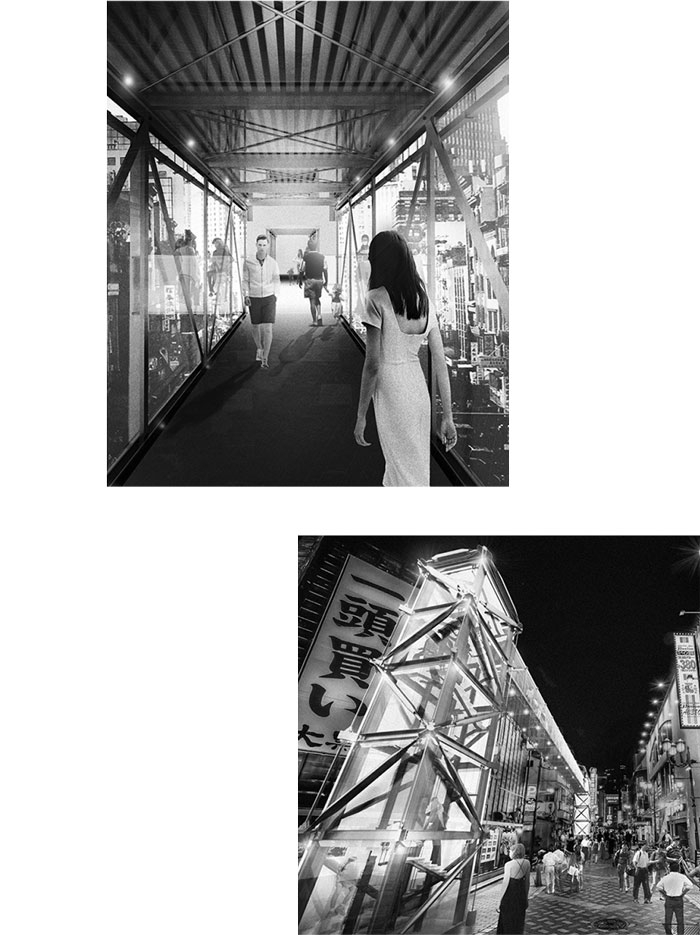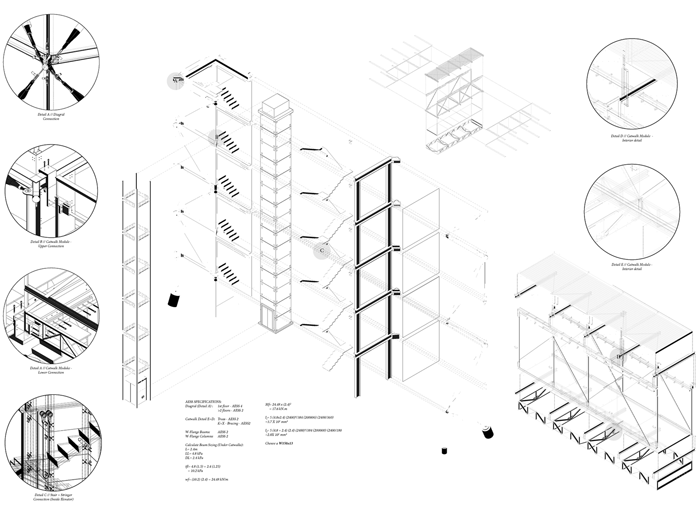SSEF Design Competition: Span
winter 2014 academic work with A. Song, A. Chen, A. Ng
Historically, the ability of materials to span has challenged architectural design. While engineering has led to the conquering of ever-increasing spans, the real benefit of advanced engineering principles and material science is reflected not so much in greater distances as the unleashing of architectural imagination. The challenge offered by this competition is to explore span - not only by pushing the limits of imagination, but also by re-examining the purity and simplicity that architecture has engaged since time immemorial.
With the ever-increasing population of our urban cities, there has arisen a need for architecture catered to densification issues. As the demand for space increases, buildings become taller, streets become narrower, and the urban fabric at the human scale disassociates itself from the mass of its surroundings. Our proposal calls for a solution - the developement of elevated streets capable of accomodating flexibility and provision of various programmatic associations.
First the sight is directed upwards, the ground plan moves up vertically. We then construct on these new ground planes , thus creating the new street typology.Using steel as our primary material for construction, we can exploit its redeeming qualities its ductile strength, pre-fabricated economization and standardization of components, its high level of accomodation, and the ease of assembly and erection. The strucutre comprises of 3 primary elements - the diagrid core which houses stairs and a glass elevator, the cat-walk modules and the programmatic modules. In featuring the diagrid on the exterior of the elevator component, we eliminate the need for a heavy concrete core, as the structure is fully capable of sustaining the axial and lateral loads. The catwalks and programmatic elements are standardized to eliminate complexity, and cater to different uses. Modules are assembled based on a standardized “shopping list” which allows for developers and customers to pick and choose elements to use in their systems. The elevated streets finds its strength in the evaluation of a common problem, and thus provides a simple, elegant solution.





